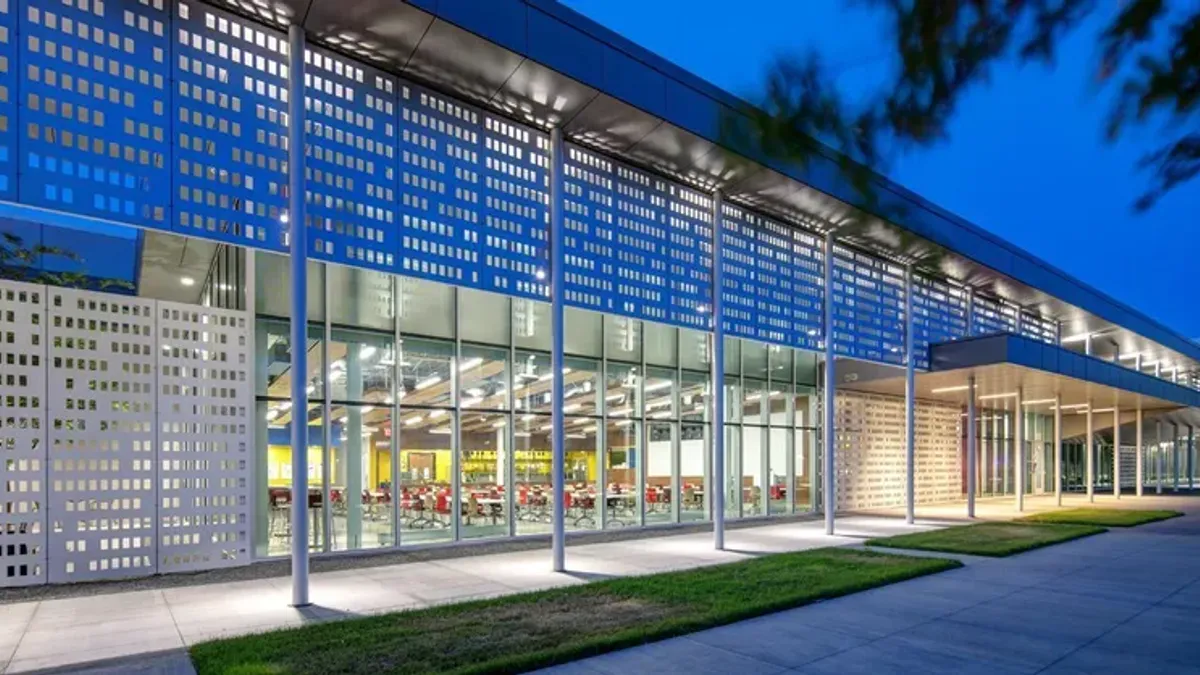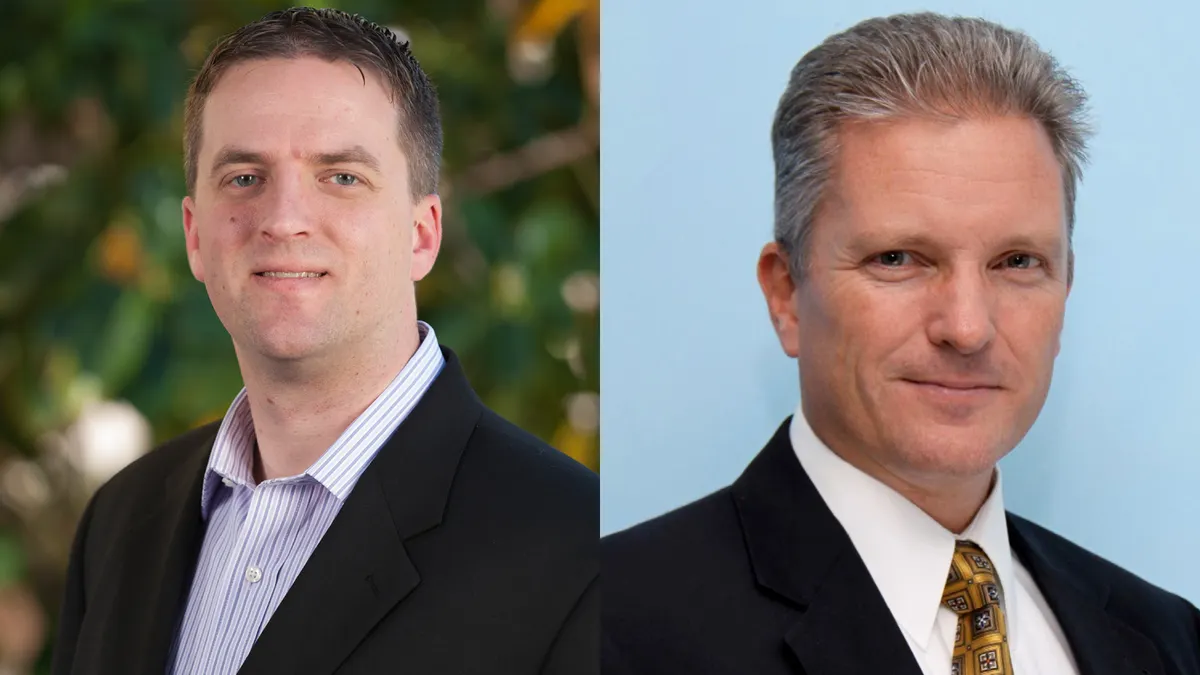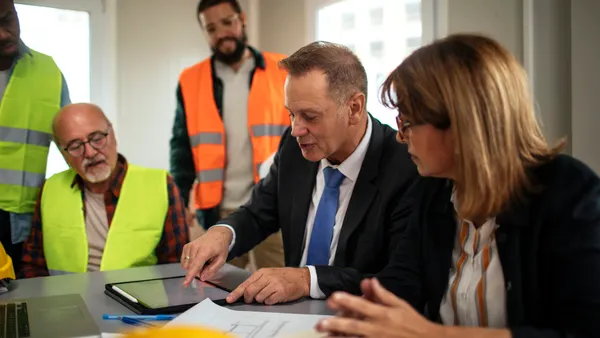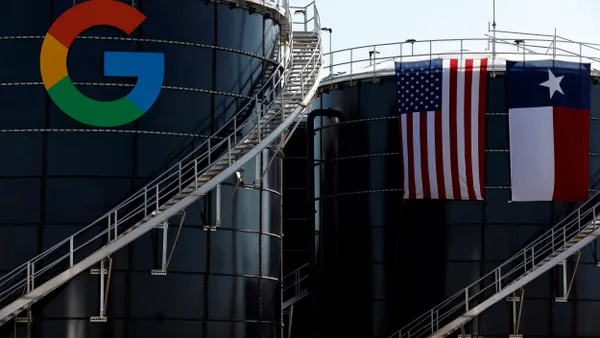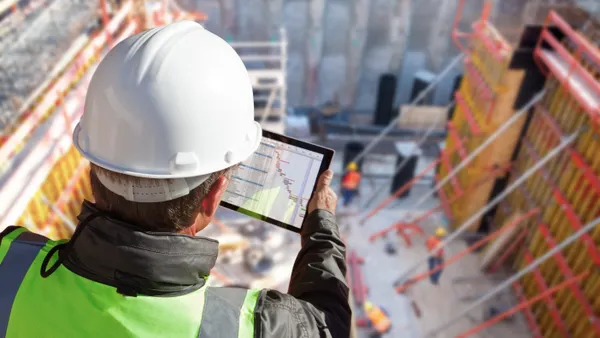ConTech Conversations presents monthly discussions with construction pros who are using technology to improve the way their companies do business. Click here for past conversations.
Tim Gaylord is being cautious when it comes to artificial intelligence.
Gaylord, corporate director of innovation for Redwood City, California-based DPR Construction, is keeping an eye on AI and other new technologies that can aid the builder in its day-to-day operations.
Here, Gaylord talks with Construction Dive about what he thinks are the most critical technologies on the jobsite, finding solutions for back-office functions and solving for a business’ problems, not its symptoms, with innovation.
Editor’s Note: This interview has been edited for brevity and clarity.
CONSTRUCTION DIVE: What are the most critical technologies on the jobsite today?
TIM GAYLORD: I'm looking at a lot of these through the new and emerging side. A lot of what we're seeing is automated progress tracking.
Project teams want to automatically track and prevent critical path delays by comparing the project's as-built progress to, in our case, its Oracle P6 schedule on the trade-by-trade or area-by-area basis.
This is really a great way for us to keep score right through model-based, work-in-place tracking. So I see it becoming more and more critical.
Another critical piece of tech for us at DPR is procurement. I think procurement in the industry needs to improve.

Procurement delays are a recurring issue faced by all of our teams. The dynamic nature of processes like supply chain issues, schedule changes and spec requirement changes all lead to delays in getting material to the site. This is currently being tracked by most in Microsoft Excel, work management platforms like Smartsheet, or some version of that.
With that comes high risk, human error or just outdated information. The impact of scheduled delays is pretty high. Materials, depending on the project, could be 50% of the project cost. Procurement is a multi-process, multi-iteration, multi-update thing with a lot of outside influences.
We're trying to combat that with solutions that are able to create a procurement plan by tying all those procurement activities to the project schedule, and integrate the procurement workflows and relevant data with the latest project schedule.
We've realized we don't need to build everything in house. There are great services out there that, with the right applications, we can partner with to help grow. In this case, we're working with ConstructivIQ not only as a vendor, but as a partner, providing feedback on how the tool is being used and how it could continue to develop.
What are some of the buzziest new technologies in the market today?
How do I talk about AI without talking about AI?
That's the buzziest thing. We've been involved in AI for a while, and we're looking at several AI tools that we want to test, but there really isn't any solution we're aware of that is ready to scale across our business. But, this is aligned with our normal process for innovation, and my team is the one looking at these.
I think there's a lot of potential, but also a lot of risk. We want to see the opportunities, learn whether our new ways increase efficiency or reduce risk, but we're doing it very carefully.
We think for at least the next several years, if not longer, AI will primarily be something that helps us aggregate information and make predictions, but humans will still need to review and assess that data, manage it and make the final decisions.
Some other buzzy, hot items are around robotics, and I think AI also aligns well with our explorations of robotic tools.
Many of them are trying to incorporate AI, or could potentially incorporate AI, to improve as they work. Vitally, they probably generate a lot of data, which also helps improve emerging AI.
We're seeing a shift in realizing, “hey, we're not trying to replace workers' jobs.” We're trying to enhance them. We're trying to remove folks and our workers out of harm's way by leveraging robotic tools. So that's where our team is exploring quite a bit.
What tech do you want to learn more about?
What we want to learn more about is, how can we leverage tools to either help us identify what the true challenge or true problem is, or work with one of our work groups and understand the true root cause challenge, not the symptoms.
I think a lot of people identify symptoms, and we want to identify challenges — what's current state, what's future state. That's how we focus our attention.



